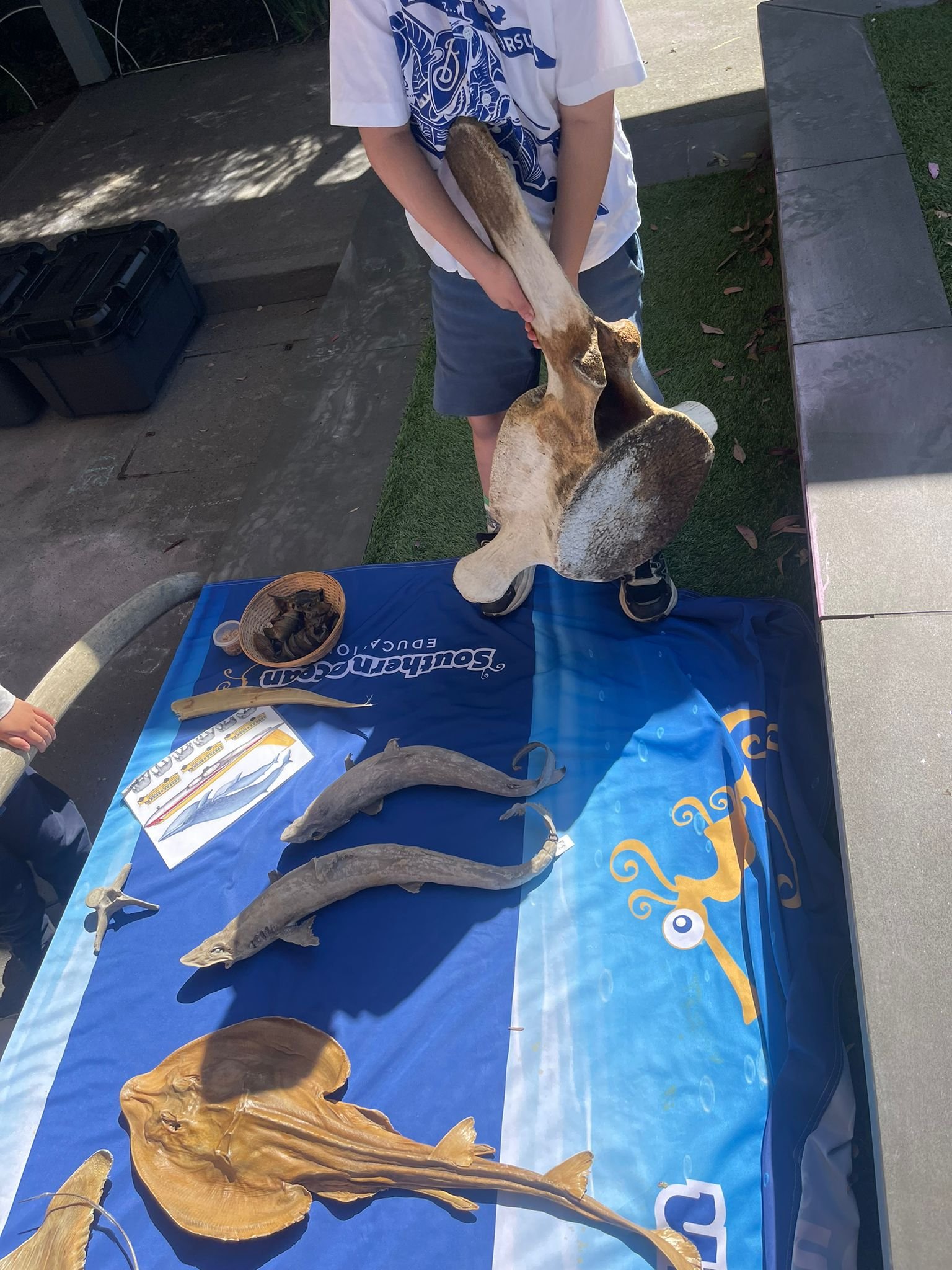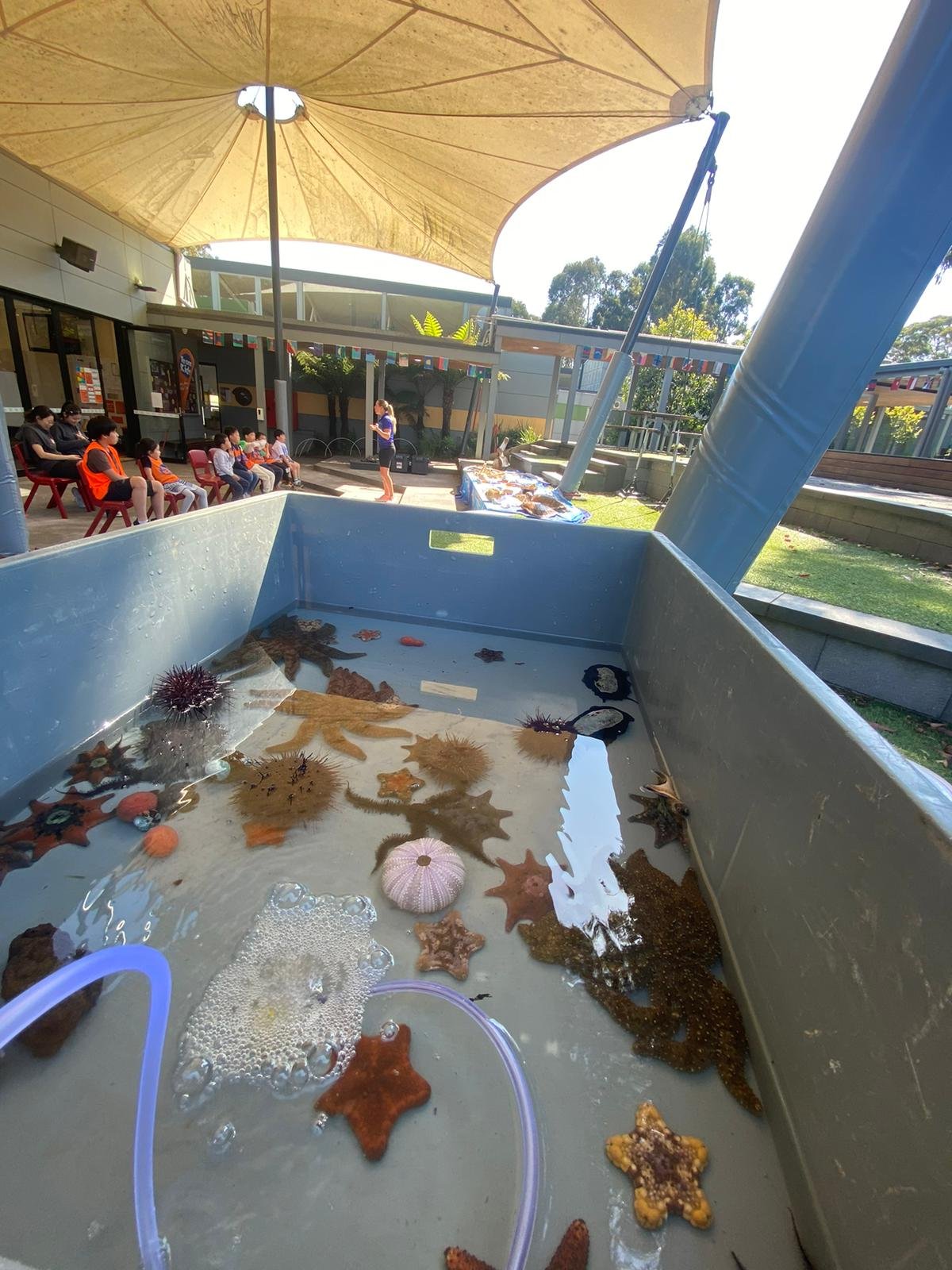Marine Education
Primary Schools
Southern Ocean Education is a mobile incursion where the marine life is brought to you. A great way to learn about the marine environment and save on transport costs. The program is unique, fun and a Hands On experience into the mysterious world of marine life which compliments the current Australian Curriculum.
Southern Ocean Education
Southern Ocean Education is a mobile incursion where the marine life is brought to you. A great way to learn about the marine environment and save on transport costs. The program is unique, fun and a Hands On experience into the mysterious world of marine life which compliments the current Australian Curriculum.
-
1 hour presentation and 30 minute hands on workshop per class
-
$11 per student; Minimum of $500 Inc. GST
-
Can cater for any number of classes/students
-
Who is the largest fish in the sea? What sort of animal is a whale? Do sharks lay eggs? Are octopus dangerous? How do sea stars reproduce? How do sharks keep their teeth so sharp? Did you know that a crabs skeleton is on the outside of their body and they need to continually moult the old one and grow new ones?
All these questions and more will be answered with a visit from a marine education officer from Southern Ocean Education.Some amazing specimens will be on show to compare size, discuss habitat, food chains and defensive mechanisms. Included in the display will be whales teeth (baleen), a green sea turtle, krill, shark teeth, octopus, seahorse, cuttlefish many shells, sponges, shark eggs and much much more.
Fascinating live rock pool animals will thrill the students senses as they handle live crabs, sea stars, elephant snails, sea urchins and plenty more. This intimate and interactive teaching environment will allow the students to look very closely at the animals behaviour, feeding habits, physiology and adaptations.
The programs are tailored to meet the standard of any specific year level with scientific terms and more detailed information increased from prep to grade 6. Free curriculum material is supplied to support the visit.
Any size group can be catered for from a single class to the entire junior, senior or whole school, whilst still maintaining the hands on experience. Similarly any specific topics can be covered on request. Eg specific marine environments, water, habitats, animal function, adaptation, ocean life, rockpools, beach, etcHow big is a whale’s bone? Where is a sea star’s mouth? Who makes seashells, and how? All these questions and more will be answered with a visit from Seaweed Sally! From the vast open ocean to the fascinating rock pools along the shore, we explore it all.
Some incredible specimens will be on display for the children to handle, including whale bones, shark eggs, octopuses, cuttlefish, seahorses, and much more! In a hands-on, interactive teaching environment, the children will also have the opportunity to touch LIVE animals such as sea stars, elephant snails, sea squirts, and sea urchins. Have you ever touched an elephant snail? It doesn’t feel like an elephant at all!
How the program runs
Discussion
A 45 minute to one hour discussion session which involves all the students attending for the day. A hall may be needed for larger groups. During this session all topics will be discussed and the large display of preserved specimens on show for the students to see will be explained in more detail.
Classes
For the more intimate handling of both the preserved specimens and the live touch tank animals each class will need their own 30 session. The classes can then rotate throughout the day visiting the one room. (The display is too large to move between rooms.) During each individual session the class will be divided in half to rotate though two activities.
1) The handling and discovering of the preserved animals.
2) The handling of the live animals in a touch tank.
With time at the end of this session for any further questions.










